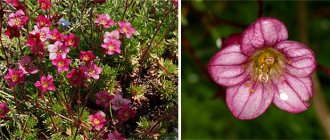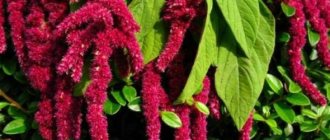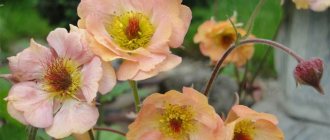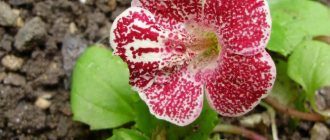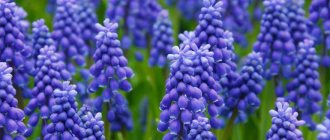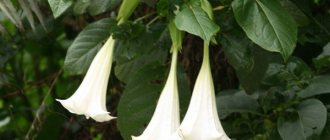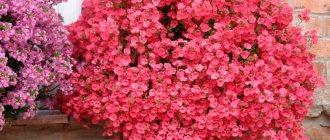Gomphrena is a dicotyledonous herbaceous flowering plant of the Amaranthaceae family. There are annual and perennial species. Lives in tropical latitudes. Most common in South America.
Gomphrena globulus is grown all over the world as an ornamental garden flower. Some species are found indoors. In eastern Asia it is eaten. In some regions it is used for medicinal purposes.
The advantages of the plant are that it is unpretentious, has a very long flowering period - until the onset of frost, the flowers do not lose their aesthetic qualities even when dried.
However, cultivation, especially at the first stage from germination to planting in the ground, is quite labor-intensive.
Types and varieties of gomphrena
About 100 species of plants are known. Each of them is good in its own way.
| View | Description/Varieties |
| Globular | The most common type. The leaves have hairs, which makes them appear silvery. Ball-shaped inflorescences give the species its name. It has several varieties of different shades. Together they look great in flower beds and provide space for the florist designer. Tall - up to 35 cm. There are dwarf varieties - up to 15 cm. The most famous varieties:
|
| Absent-minded | The inflorescences resemble carnations. Plants are cascading, creeping. The appearance benefits from alpine slides and hanging flower pots – where you want to create a cascade of flowers. The Pink Pinheads variety retains a beautiful soft pink color even when dried. Used in dry ikebana and floral crafts. |
| Golden-flowered (Haage) | Large inflorescences. The color is complex with a transition from carmine red at the tips to golden inside. Height 30-40 cm. Leaves are long, narrow, with a silvery tint on the back side. Very sensitive to cold. In cool summers it may not bloom at all. |
| Dwarf (Gnome) | Grows no higher than 10-15 cm. White, orange, pink. Thanks to its short flower stalks, it is widely used in borders and planted in outdoor pots. |
| Purple | The leaves are rich green and set off the beauty of the bright pink flowers. It grows up to 30 cm in height, grows well in width, and carpets the entire space allocated for it. Can grow in pots. |
| Strawberry | During flowering, it looks like a ripe strawberry because of the scarlet round buds. It reaches a height of 50 cm. It blooms from June to October. |
Description of the plant
Gomphrena L. is a genus of plants from the amaranth family. It includes more than 100 species. These plants are found in the tropical and warm temperate zones of both American continents - from southern North America to northern Argentina, and on the Pacific Islands, in Australia (33 species are native). One species is native to China. Representatives of the genus are found in almost all of Africa, Asia (except for its northern part) and in the eastern part of North America.
Gomphrena is also called unfading, immortal or eternal, everlasting. The species G. claussenii is used for phytoremediation (a set of cleaning methods) of soils contaminated with zinc and cadmium.
Botanical description:
- Annual and perennial herbs, less often subshrubs.
- Stems – creeping, climbing or erect.
- The leaves are usually opposite, sessile or petiolate. The leaf blade is oval or ovate, entire-edged, bristly-pubescent below, sometimes above.
- Flowers – grouped into spherical heads growing at the top of the shoot or its forks, often supported by sessile leaves. Five perianth leaves are surrounded by 5 stamens with filaments fused at the base into a tube. Flower color - red, white, yellow. Gomphrena flowering period: July-October.
- The fruits are single-seeded achenes. The seeds are smooth, round or oblong.
The plants combine lanceolate leaves and spherical inflorescences, consisting of many tiny flowers, clearly visible only upon closer inspection. Flowers in shades of purple, pink, white, and there are two-color varieties. The leaves are ovate-lanceolate, rough, gray-green.
Gomphrena globulus has an attractive compact shape with rigid, highly branched stems; if you pinch the tops of young shoots, it will grow stronger.
The sight of a blooming gomphrena, reminiscent of the intricate work of a jeweler, is truly impressive. The plant attracts swarms of butterflies, numerous species of which can be admired around the flowers.
Growing gomphrena from seeds
Flower growers in Russia prefer annual varieties, simply because they do not tolerate the harsh climate in winter.
It is easier to sow new plants every year than to wait for them to overwinter.
Preparing seeds for planting
Preparing seeds for seedlings is somewhat different from the traditional one.
- The seeds are poured with a sufficiently large amount of warm water (about a glass).
- Leave at room temperature for three days, change the water every day and stir.
- Then use a sieve to drain the water. The seeds are washed under running water and placed in a glass container with a lid and placed in the refrigerator.
- There they stratify over the course of a week.
Time for sowing seedlings
It very rarely grows from seeds when planted directly in the ground, as it needs warmth and a long growth period. Therefore, it is grown by propagating seedlings.
They are sown already in February, early March in boxes with prepared soil.
Sowing rules
Sowing gomphrena seedlings has several conditions that are not difficult to comply with:
- Prepare the soil from equal parts of garden soil and humus. The second option is possible - from universal soil and vermiculite in a 1:1 ratio.
- Moisten the substrate so that it is moist but does not stick to your hands.
- Fill the planting boxes. It's better to take cassette ones.
- Compact the soil.
- Make a hole in each cassette using a wooden stick, knitting needle or pencil.
- Carefully pour the wells with filtered water. The most convenient way to do this is from a used medical syringe without a needle or with a syringe. After planting, you no longer need to water the soil.
- Place prepared seeds from the refrigerator 1-2 per hole. Even two sprouts in one container will not interfere with each other's growth.
- Level and lightly compact the soil, cover with film or cover with glass.
- Be sure to place the tray with the seeds in a bright, very warm place - directly above the radiator or near it, on a windowsill that faces south and warms up in the sun. The optimal temperature for germination is +30…+40 °
C. Shoots will appear in three days.
If the temperature is below optimal (but not less than +20...+22 °
C), germination will occur in about two weeks. - After the seeds have sprouted, remove the cover and protect the planting from direct sunlight.
- If a common rather than a cassette container was used for seedlings, they will have to be plucked after 2-3 true leaves appear.
- During seedling growth, it is very important not to flood it with water. Tender seedlings will die from excess moisture.
The sprouts can be fed with a universal composition for seedling growth, for example, “Krepysh”.
Remember
- Prepare the soil. The soil for sowing seeds is prepared in advance in a 1:1 ratio of fertile soil layer and humus. The plant grows and develops well in fertile, loose soil.
- Soak the seeds in water for 3 days . Then stratify in the refrigerator for good germination.
- proper care. Plants need to be watered regularly, loosened the soil, and fed twice a season.
- Collect seeds in time. The seeds are collected in September. Dry the cut inflorescences and store them in a dry, warm place.
Planting gomphrena in open ground
Gomphrena loves light, not heavy soil. To do this, you can add sifted river sand to the ground before digging.
But the soil is not as important as the light.
Moreover, you should not apply organic matter and mineral fertilizers before planting.
The main thing is to choose a sunny place and avoid open, windy areas with drafts.
What time to plant
Gomphrena is planted only when the ground has thawed and warmed up, and stable warm weather has established itself without temperature changes. This becomes possible in May, sometimes in more northern latitudes - in June.
Landing rules
The grown seedlings are transplanted into previously prepared soil. To do this, holes are made at a distance of 30 cm for ordinary ones, 20 cm for dwarf species.
Each plant is well kneaded and watered.
Review
Knora:
“An annual plant, vigorous, branched. Height 20 - 45 cm. Blooms for a long time and very abundantly. Small flowers are collected in capitate inflorescences of almost spherical shape with a diameter of about 2 cm.
Color - purple, membranous bracts pink, red, crimson, lilac. The plant is heat-loving and light-loving. Prefers loose soils, does not like waterlogging and drying out of the soil. Gomphrena is grown by seedlings. Shoots appear 7 - 8 days after sowing, and flowers appear 80 - 90 days after germination. The plant is a true dried flower and is used as a cut flower for winter bouquets.”
Source: dachniiotvet.galaktikalife.ru
Caring for gomphrena in the garden
Gomphrena - loves warmth and light. It requires a lot of space for full development, growth and flowering. There should be no larger plants in the flower beds that could obscure or crowd it out.
Tolerates drought and heat well. Not demanding on watering.
Formative pruning is recommended for plants during flowering. Cut flowers last well in vases for a long time.
And the gomphrena in the flower beds will bloom even thicker and more luxuriantly.
Watering and fertilizing
2-3 days after planting in open ground, you can feed with mineral liquid fertilizer. For example, potassium-phosphorus and nitrogen. Also use ready-made complex mixtures.
Fertilizing must be done twice, but only before flowering begins.
Excessive amounts of fertilizer can lead to the plant not blooming at all, or flowering will be sparse, and the entire space will be filled with leafy green mass.
Therefore, during flowering, regular but moderate watering will be sufficient. If it rains periodically in the summer, you won’t have to water the gomphrena at all. She will only need moisture during a short drought.
Subtle touches of an “immortal” flower
Gomphrena is considered a charming representative of dried flowers, which are widely used to decorate summer cottages. It belongs to the Amaranthaceae family and is very similar to ordinary clover. In contrast, the plant is much larger, and the buds come in different colors.
Gomphrena is a herbaceous plant for open ground that can create a stunningly beautiful carpet. The shoots of the flower are erect with many branches. Some varieties have a creeping character. They grow up to half a meter in height and are covered with dense, sessile, elliptical foliage. Gray miniature hairs are visible on each leaf blade.
The small buds are collected in inflorescences in the form of a ball and are located mainly on the tops of the lateral and main stems of the flower. Each of them is covered with original natural paper that never fades. In addition, you can see light dots on the heads of bright buds. They resemble small golden-colored insects that enjoy the sweet nectar of the inflorescence.
In its natural environment, the gomphrena plant produces buds of various colors, namely:
- snow-white options;
- pink shades;
- red tones;
- yellow and orange;
- purple.
Interestingly, the perianth of Gomphrena also has a pubescent structure, like the leaflets. This “design” gives the plant a certain charm and uniqueness. The buds bloom with the onset of summer, delighting the hearts of summer residents until the first autumn frosts.
The buds that bloomed first on the plant do not lose their beauty for the whole season. The “immortal” flower is valued for this unique property.
Wintering
If there is still a need or a strong desire to plant perennial gomphrena, you will have to try to provide it with safe wintering conditions.
The first, most reliable way: replant for the winter together with a lump of earth in a spacious pot and put it in a warm, dry place.
Second: Trim the ground parts, mulch with dry leaves or straw, cover with covering non-woven material, and then with film. Remove the shelter only after the threat of morning and night frosts has ended.
Winter period
The gomphrena plant survives the winter very poorly. Annuals generally die during this period, and perennials try to survive until spring, but it is very difficult for them. If you decide to plant same-year-old trees, then you shouldn’t worry so much, because in any case you will have to dig them up and prepare to plant new ones next year. If you planted perennials, then the situation here is certainly more complicated. In this case, you need to transplant all the plants into pots and take them home to a warm place. But not everyone has enough space for more than 30 plants. In this case, an ordinary old carpet will help you, with which it is advisable to cover the plants for the winter. The last way is to cut off the leaves and flowers so that the gomphrena blooms again next year. It would seem that the method is easy, but in fact it is the most deadly for flowers: the life of the plants is reduced.
Diseases and pests of gomphrena
In general, gomphrena is not very sensitive to diseases. She is exposed to them only occasionally. But even in this case, the situation can be saved.
| Disease/pest | Symptoms | Corrective measures |
| Blackleg | Blackening of stems, loss of turgor. | Stop watering for a while. Sprinkle the soil with wood ash and loosen it. |
| Aphid | The appearance of sticky plaque and insects on the leaves. | Spray with soap or ash solution. In difficult cases, use insecticidal preparations. |
| Cercosporiosis | Dark spots, leaf deformation. | Treat with fungicides (Fundazol, Agat, Vectra, Thanos). |
Application
Gomphrena flower can be used to create unique floral arrangements - both fresh flowers and dried flowers. Flowers are highly durable, and dried flowers can retain a fresh, natural appearance for up to 3 years!
In Polynesia and Nepal they are used to make traditional garlands. Dried flowers of the globular gomphrena perfectly retain their beautiful fuchsia color, making them very popular when decorating dishes and sweets such as cakes.
Flowers and fruits are used in herbal medicine - they contain vitamins C and E, minerals, saponins and phytosterols.
In flower beds and containers, gomphrena will be presented in an unusually decorative way, and the sight of multi-colored butterflies fluttering around dozens of flowers collected in spherical inflorescences will amaze any person sensitive to beauty.
Tall varieties are grown in flower beds as an addition to bouquets and dry arrangements. Dwarf varieties are suitable for borders, planting in rock gardens, and for growing in containers.
Gomphrena globosa is a typical butterfly catcher. Its flowers are the same bait for butterflies as buddleia flowers.

